1.2 shapes, Ft, Names, Types
living in specific environments requires _____ _____. In bacteria this is also known as?
specific adaptations; virulence factors
define virulence factors
microbial components that contribute to the ability to cause disease in a host
1/32
There's no tags or description
Looks like no tags are added yet.
Name | Mastery | Learn | Test | Matching | Spaced |
|---|
No study sessions yet.
33 Terms
living in specific environments requires _____ _____. In bacteria this is also known as?
specific adaptations; virulence factors
define virulence factors
microbial components that contribute to the ability to cause disease in a host
are bacteria euk or prok
prok
what is the main difference between euk cells and bacteria?
bacteria lacking membrane bound organelles
in order to identify and characterize bacteria it must first be ______ into _______ _______
isolated; pure cultures
how do you isolate an individual strain of bacteria?
dilute it and then immobilize it
a ______ is isolated from a _______
strain; colony
Shapes:
round = ______
rod = _______
coccus; bacilli
another term for pair of cocci
diplococci
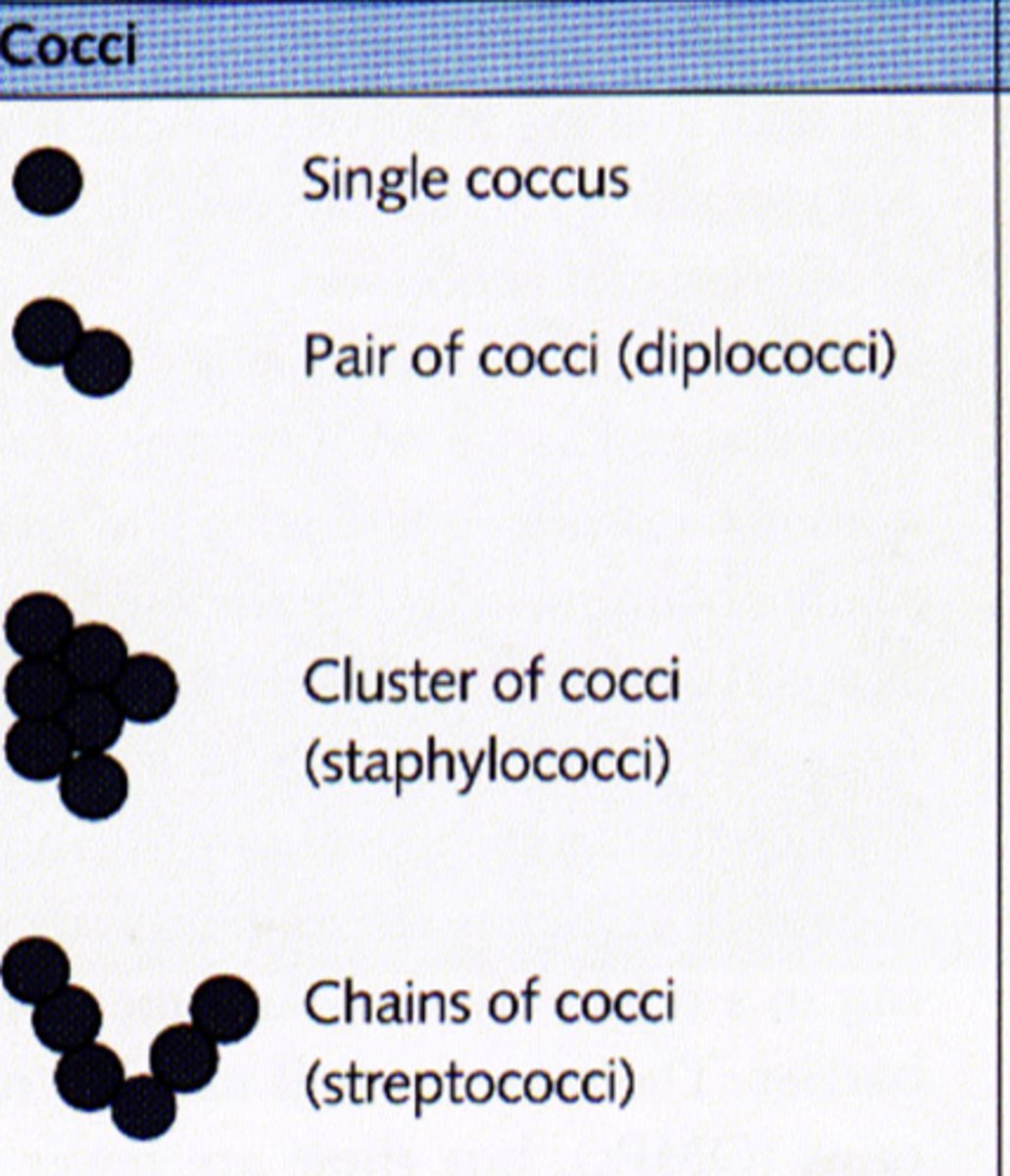
another term for cluster of cocci
staphylococci
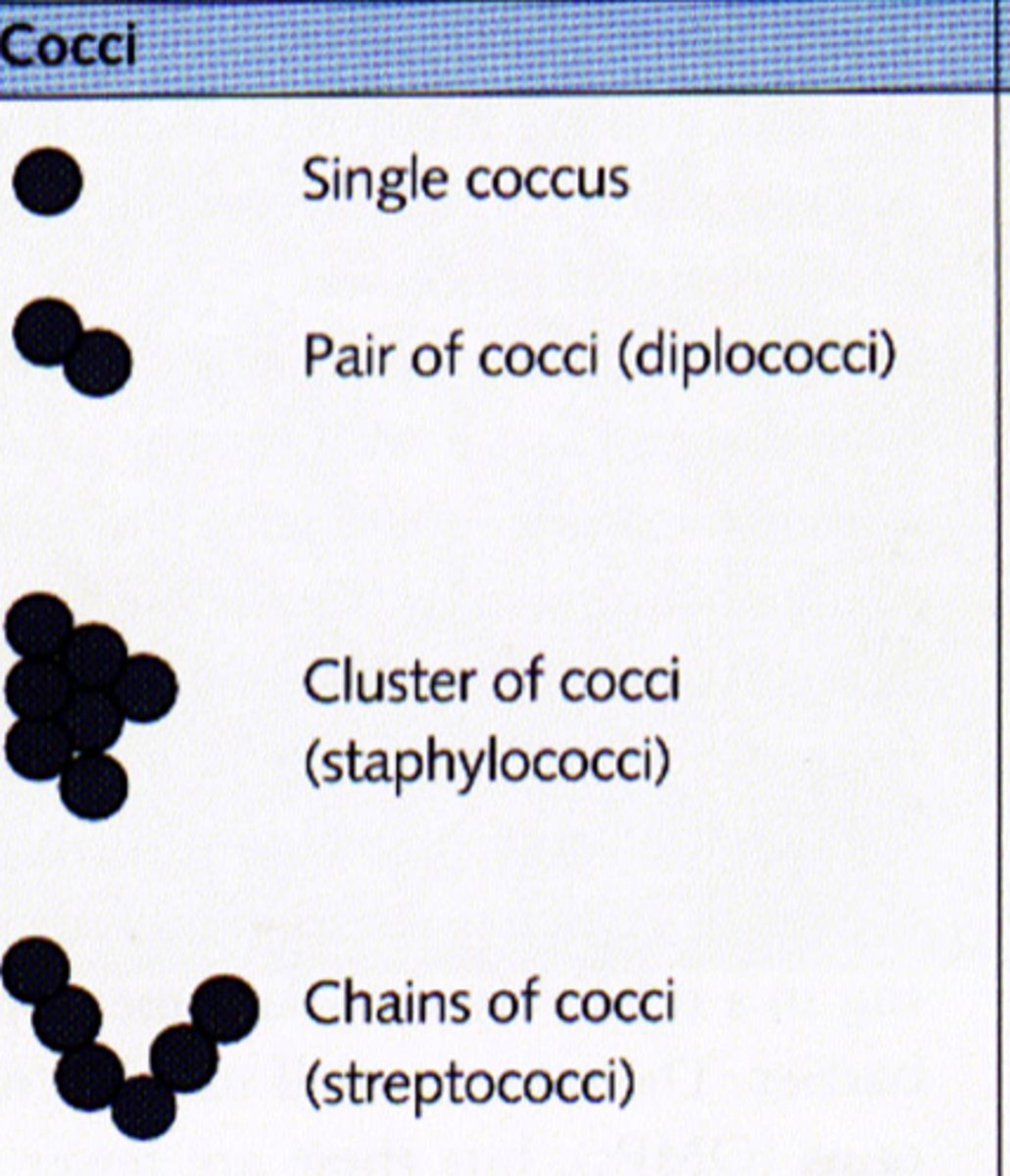
another term for chain of cocci
streptococci
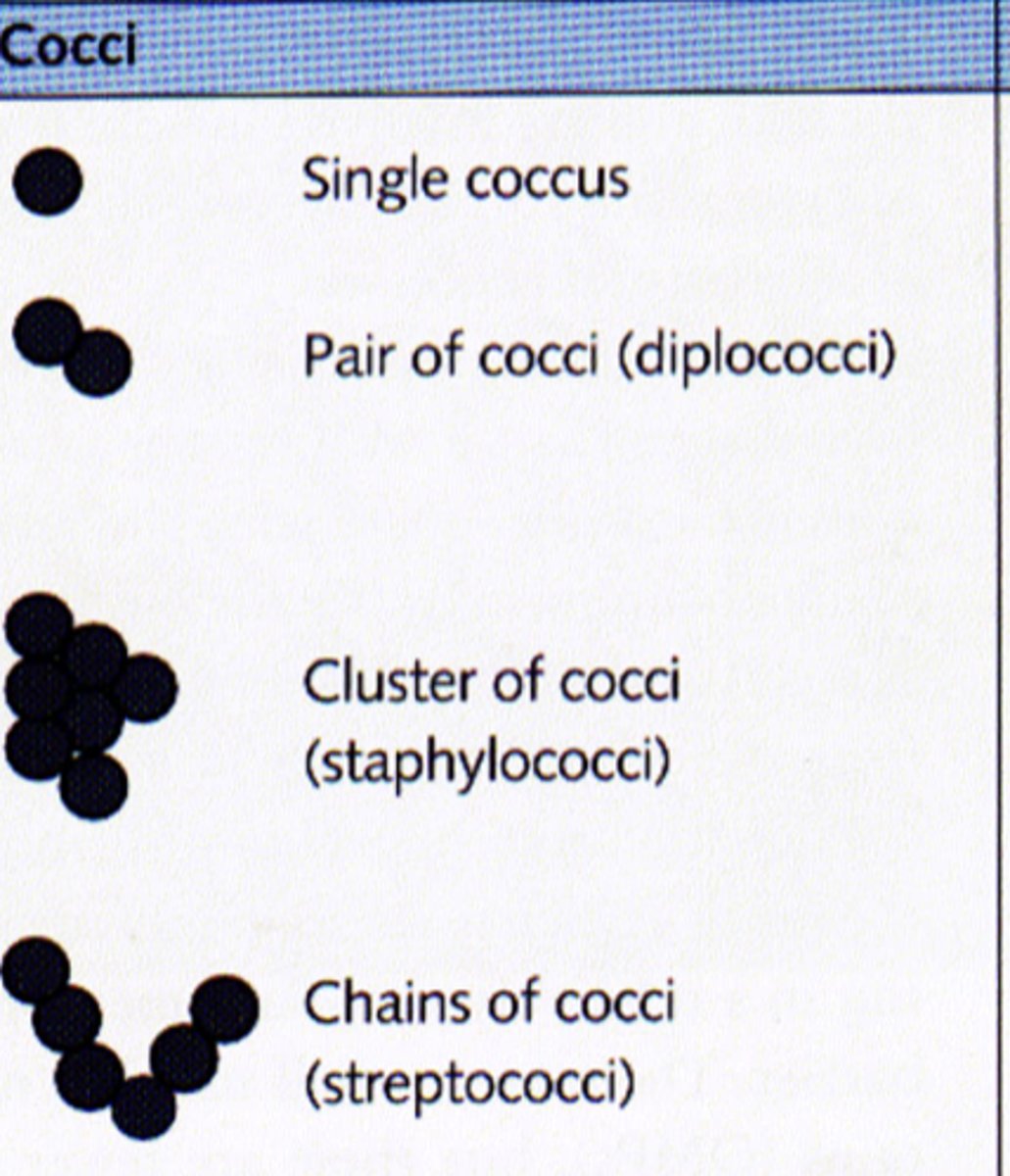
another term for curved rod
vibrio
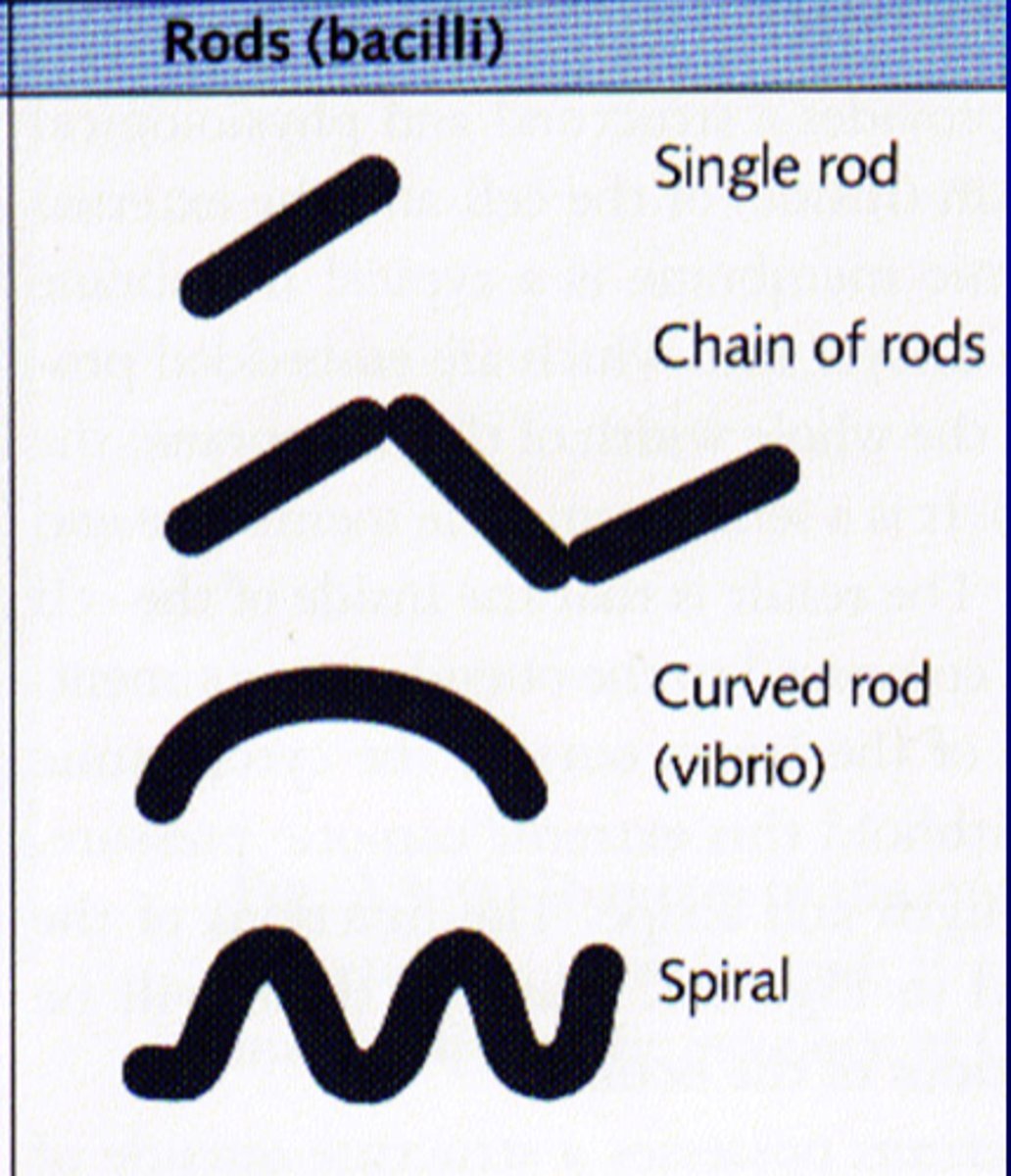
what are the 2 differences between gram negative and gram positive
-gram positive have a thick peptidoglycan cell wall while gram negative do not
-gram negative bacteria have an outer membrane lipopolysaccharide layer
what color does gram negative bacteria become on slides after stained? gram positive?
pink; purple
what must be done prior to beginning the gram stain process?
heat fix the bacteria to the slide
what is the first stain material used during gram staining?
crystal violet
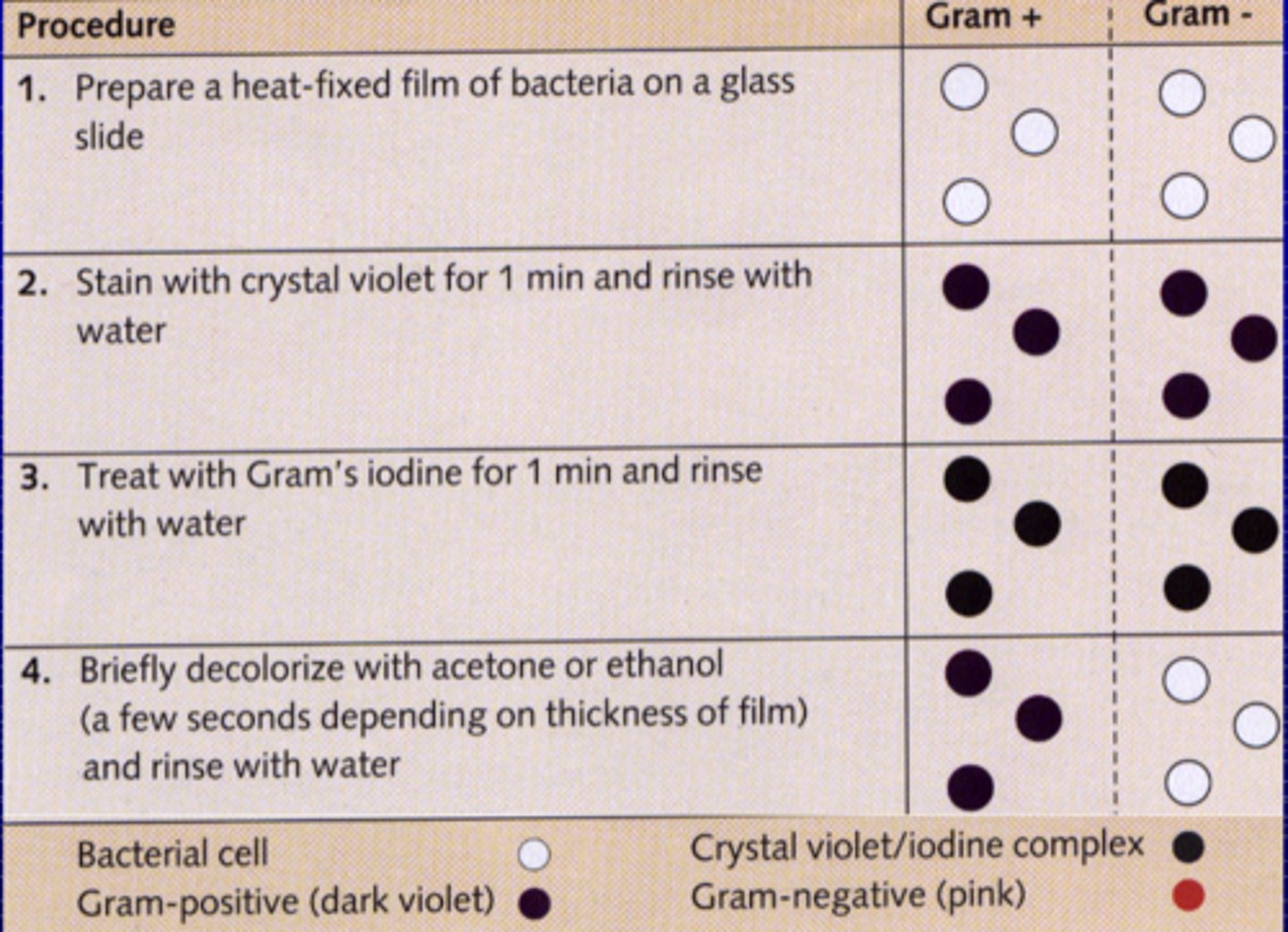
what is the second stain used in gram staining?
gram iodine
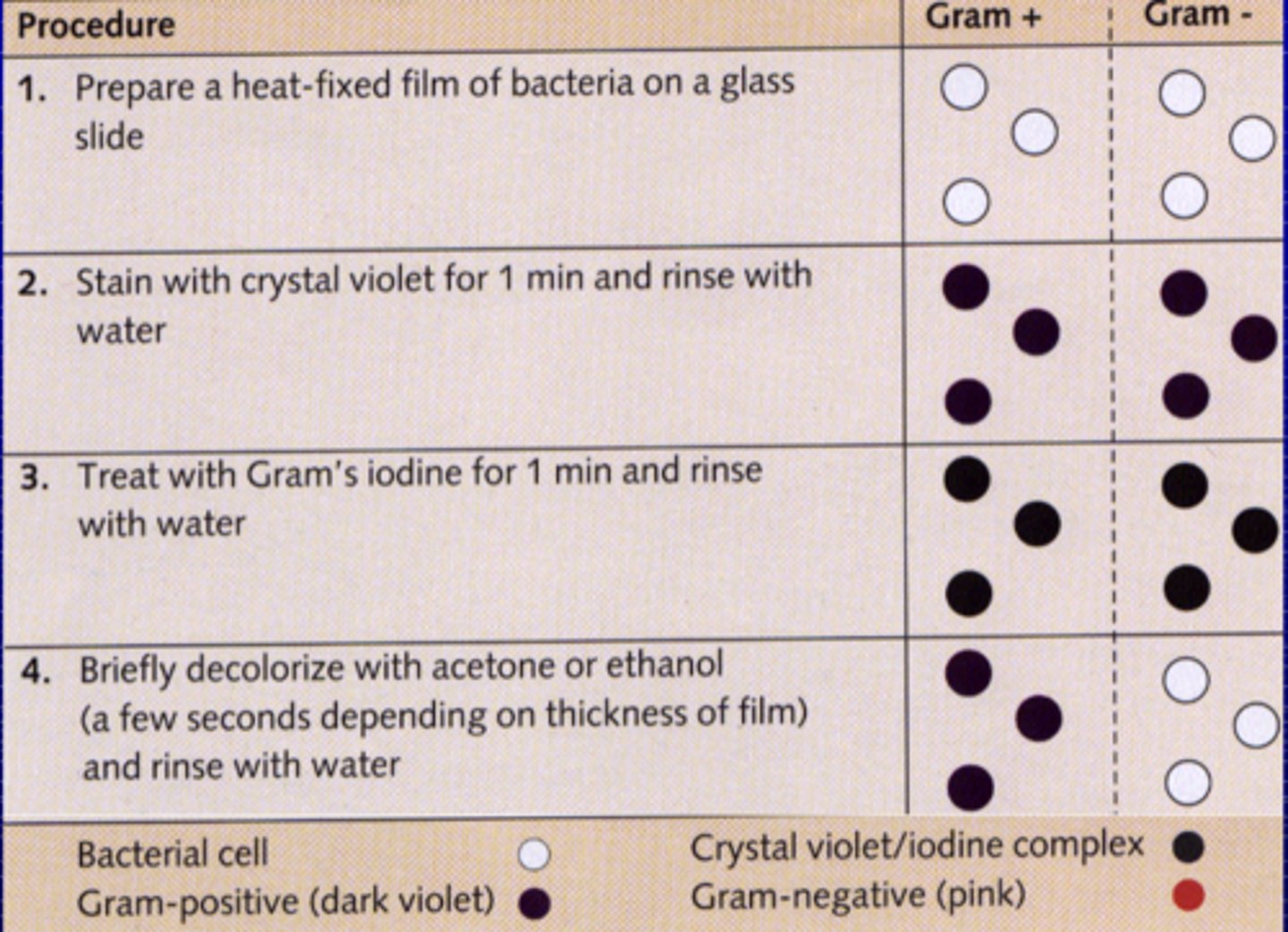
after staining with gram stain, what is done to the bacteria/slides?
decolorize with acetone or ethanol
what is the (third) counterstain used in gram staining?
safranin or basic fuchsin (pink dye)
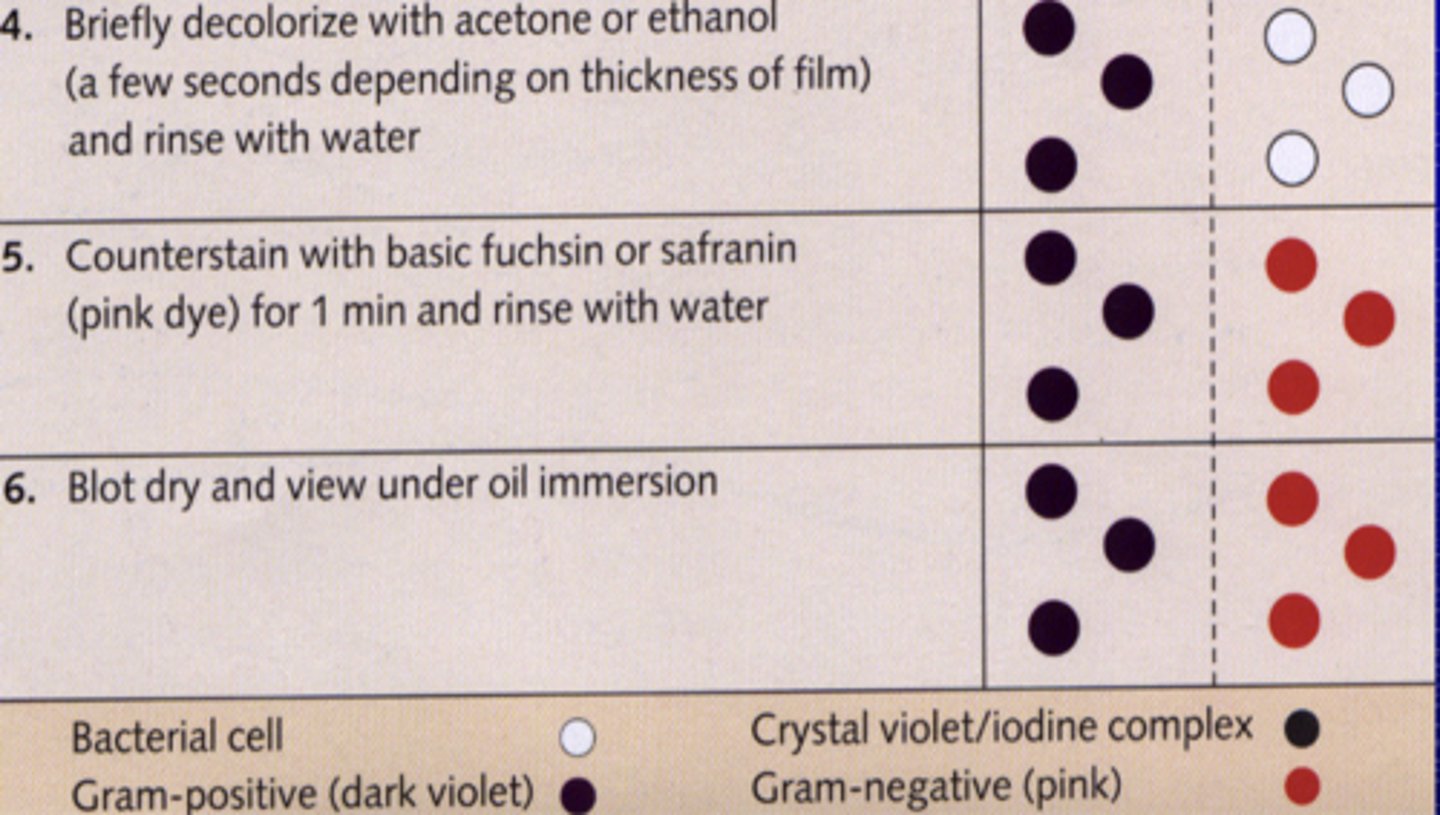
other than shape and gram staining, what other characteristics are used to describe bacteria?
aerobic/anaerobic, spore formation, motility
what is the biochemistry test for bacteria?
pH test indicating how the bacteria utilize sugars (fermenting, etc)
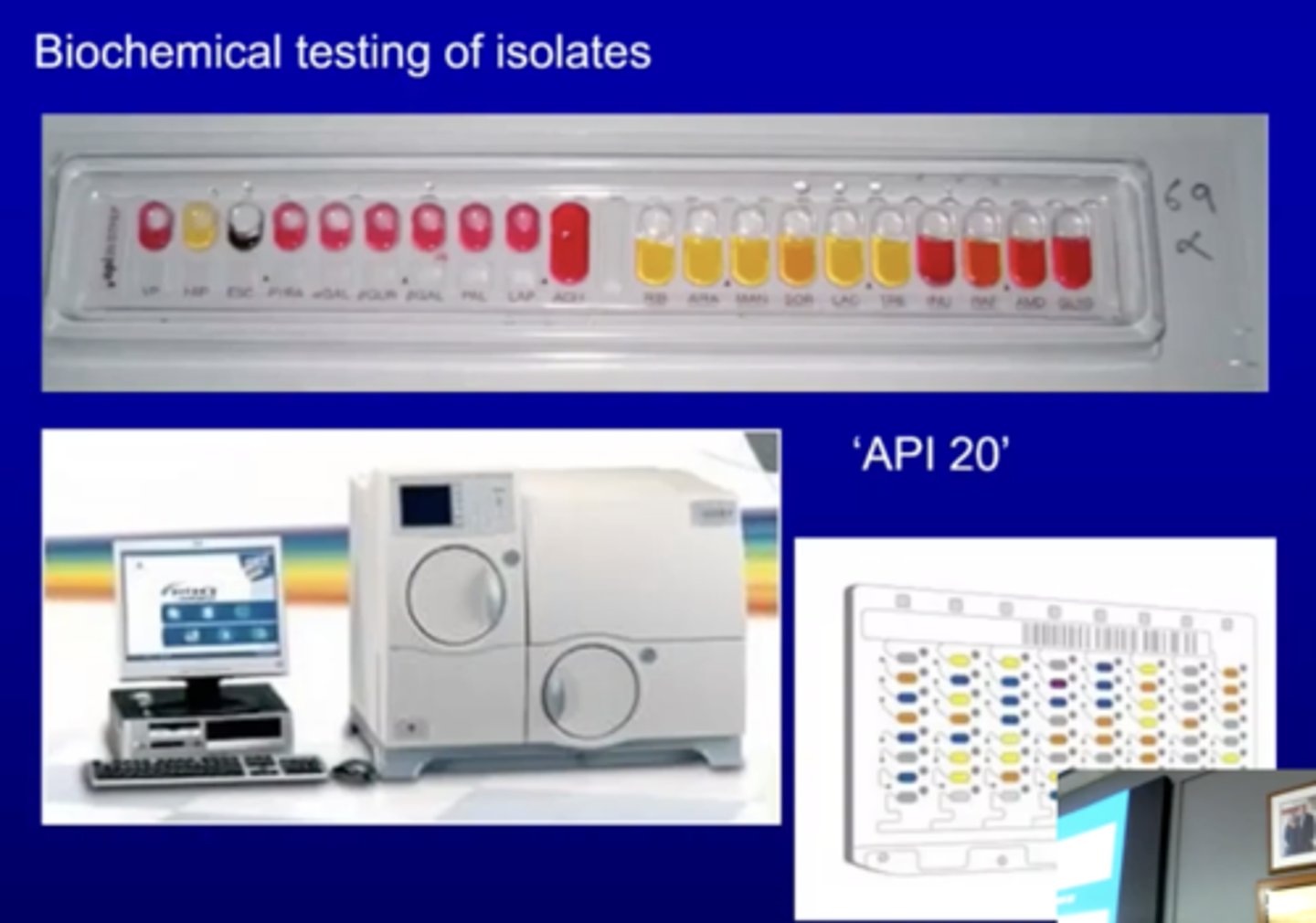
in aerobic growth, _____ is the final e- acceptor. in anaerobic growth _____ _____ or ______ is used.
oxygen; inorganic molecules; CO2
what are two bacteria that form spores
clostridium and bacillus
respiration is the energy-generative metabolism that involves the ______ _____ and _______ _____ by electron transport chain
Krebs cycle; oxidative phosphorylation
fermentation is the conversion of the products of _______ to other forms with or without additional ATP.
glycolysis; without
spores are ______ ______ forms that are stable for long or short periods of time
metabolically inert; long
(think endospore)
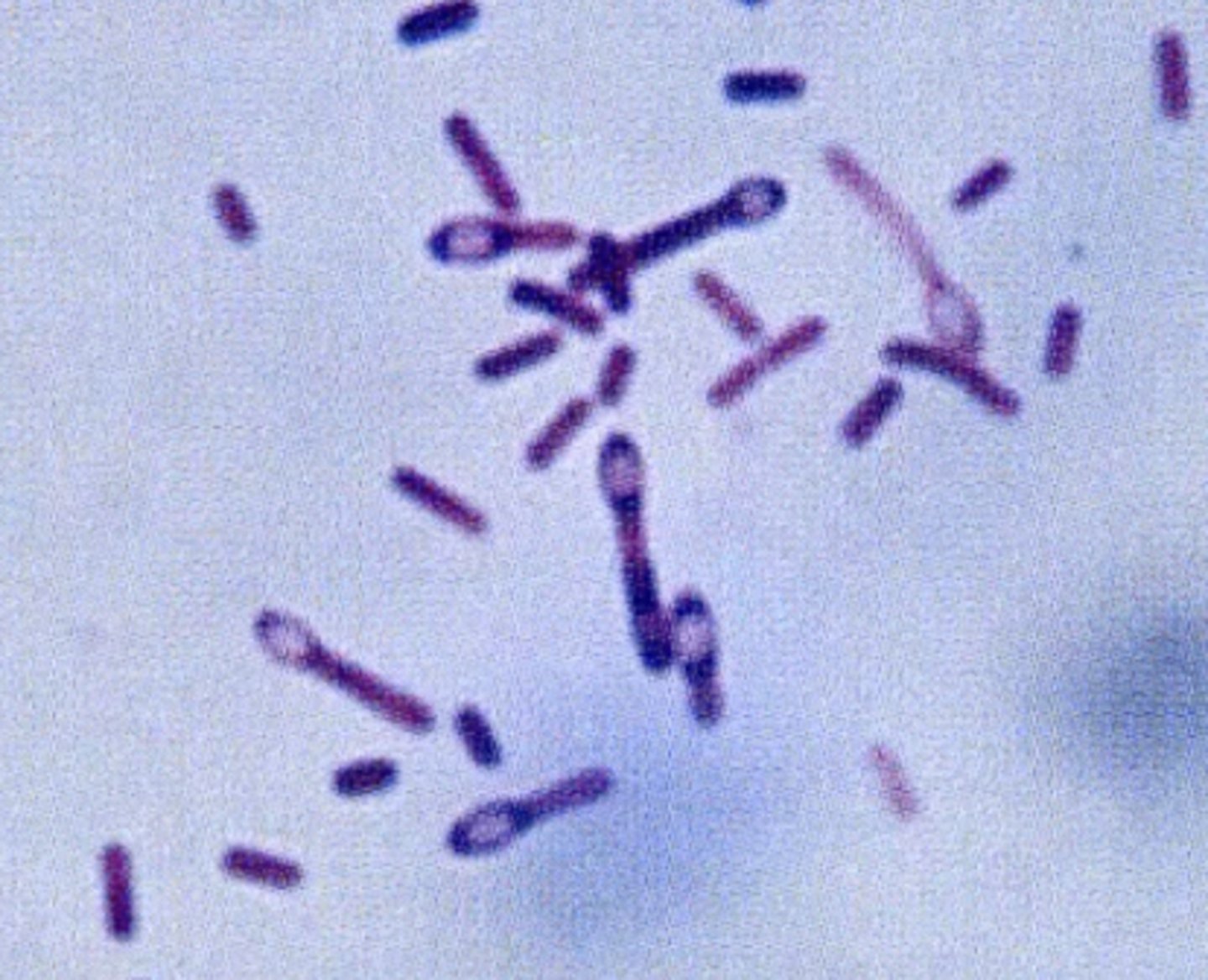
the best way to compare bacteria is using the _______ ______ ______ gene sequence alignment
16S ribosomal RNA
what is an additional strain typing confirmation test that can be done?
serological typing
how is DNA/RNA sequencing obtained?
PCR
what is the classification system of living things?
Domain, Phylum, Class, Order, Family, Genus, Species
3 domains of life are?
Bacteria, Archaea, Eukarya
when naming bacteria what two classifications are used
Genus species or Genus species (ie. Escherichia coli)
when the genus is alone, lowercased, not italicized what does this indicate?
multiple types of that genus
(ie salmonellae, chlamydiae, etc)